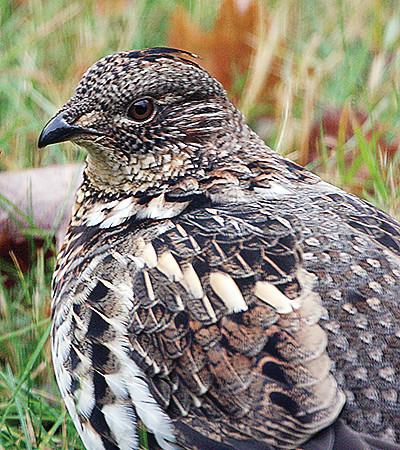Support the Timberjay by making a donation.
Is West Nile virus impacting ruffed grouse?
New multi-state collaboration a step forward in answering that question
REGIONAL— Both ruffed grouse hunters and Department of Natural Resources wildlife officials were surprised at the low numbers of grouse in northern Minnesota last fall. Spring drumming counts had …
This item is available in full to subscribers.
Attention subscribers
To continue reading, you will need to either log in to your subscriber account, or purchase a new subscription.
If you are a current print subscriber, you can set up a free website account and connect your subscription to it by clicking here.
If you are a digital subscriber with an active, online-only subscription then you already have an account here. Just reset your password if you've not yet logged in to your account on this new site.
Otherwise, click here to view your options for subscribing.
Please log in to continue |
Is West Nile virus impacting ruffed grouse?
New multi-state collaboration a step forward in answering that question
REGIONAL— Both ruffed grouse hunters and Department of Natural Resources wildlife officials were surprised at the low numbers of grouse in northern Minnesota last fall. Spring drumming counts had looked strong and the birds should have been in the upward trend of their population cycle. Wildlife officials had projected a banner year for hunters, but the reality fell far short of those predictions.
So what happened?
Wildlife officials aren’t sure and acknowledge there could be several factors at play. But one factor that’s been the subject of increasing speculation is the possibility that West Nile Virus, or WNV, has been reducing the brooding success of ruffed grouse. A study from Pennsylvania, published earlier this year, helped to bolster the possibility, according to Charlotte Roy, a regional biologist with the Minnesota DNR in Grand Rapids. The study suggested that WNV was linked with lower-than-expected recovery of ruffed grouse populations in Pennsylvania, at least in areas with less-than-optimal habitat.
Those results have prompted wildlife officials in the Great Lakes states of Minnesota, Wisconsin, and Michigan, to develop a collaborative pilot study to determine whether ruffed grouse in the three states may be experiencing a similar effect from WNV.
Roy said both Wisconsin and Michigan saw disappointed hunters this past year as well, which has put the issue higher up on the agenda across the lakes region. The pilot study won’t yield any definitive results, but biologists hope it will give them enough information to help develop a more detailed study that could.
So far, there’s no evidence that WNV is having any impact on grouse numbers in Minnesota, but biologists are quick to acknowledge there’s really no evidence either way.
“Without data, it’s really hard to know if it’s a factor,” said Tom Rusch, DNR area wildlife manager in Tower. “We know it’s present in all Minnesota counties, but at this point all we have is speculation.”
If WNV is affecting ruffed grouse in Minnesota, Roy said it’s most likely affecting the young and could explain why drumming counts and fall hunting success aren’t aligning like they have in the past. She noted that strong ruffed grouse drumming counts last spring suggested the adult population was robust heading into the breeding season. It was young-of-the-year that seemed to be in short supply last fall, and that has a noticeable impact on hunter success since hunters most often take young birds.
While cold weather and heavy rain events in late May and early June can hurt ruffed grouse reproduction, Roy said conditions last spring and summer should not have posed much of a problem for grouse chicks. “It’s possible that something is reducing brood potential,” said Roy. “We’re kind of at a loss for a good reason for why that might be happening.”
Roy notes that another study suggested that grouse chicks are susceptible in some cases to WNV, while others manage to recover even after exposure.
The Pennsylvania study suggested WNV was more of a problem in areas with marginal habitat, which would certainly not describe northern Minnesota or Wisconsin, which offer tens of millions of acres of prime grouse habitat. “In the Great Lakes region, we’re hopeful that our habitat quality will protect against this kind of impact from WNV,” said Roy.






